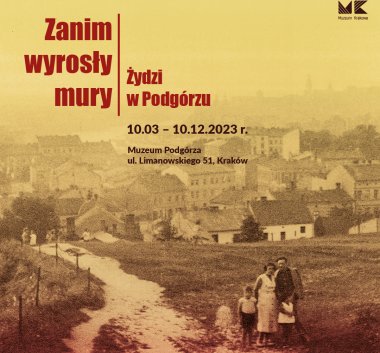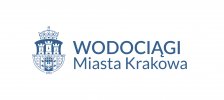Before they built the wall. Jews in Podgórze
10.03.2023
- 10.12.2023

Exhibition curator
Piotr Figiela
The title of the exhibition refers primarily to the time before the construction of the wall of the Kraków Ghetto in Podgórze, which separated the Jews from the outside world during the Second World War, but it can also be interpreted in many ways.
The aim of the exhibition is to illustrate the characteristics of the Jewish community of Podgórze by showing its multi-dimensional nature, as well as to demonstrate how the thriving city influenced its Jewish inhabitants and vice versa - how the Jewish community worked not only for its own benefit but also for the general population of Podgórze and thus for the city of Kraków.
The story of the Jewish community in Podgórze goes back to the time when it was still part of the Jewish community in the Klasno district of Wieliczka. It was only in 1891 that a form of kahal was established in Podgórze, and it is from this moment that we may speak of the dynamic growth of the Jewish community in Podgórze. Divided into several sections, the exhibition tells the story of the establishment and activities of the religious community as well as religious and philanthropic organisations and associations. A separate section is devoted to the economic activities of the Jews of Podgórze, who made a considerable contribution to the industrial development of Podgórze and later Kraków.
Of unique character is the section of the exhibition entitled Family. It is a kind of micro-history study of five Jewish families from the Podgórze area - the Monderers, Lewkowiczes, Sterngasts, Feldmans and Offens. Thanks to the rich iconography, which comes mainly from family collections, the private, domestic world of five families from Podgórze, which underwent a cultural and moral metamorphosis over two generations, is revealed to the visitors. Filled with the laws of the Torah, the religious world of the parents is giving way to modern ideas in the Jewish world, such as Zionism and socialism.
The last section, entitled The Elite, presents the most important groups and individual figures in the life of the Jewish community in Podgórze, with a huge impact not only on the Jews of Podgórze but also on the entire population of the city. The elite included rabbis from the Fränkl family, city councillors of Podgórze and prominent lawyers and doctors, such as Samuel Aronsohn, Jakub Westfried, Salomon Oberlaender and Henryk Pisek, as well as social activists and teachers, such as Amalia Wasserberger, Henryk Fränkel and Salomon Spitzer, a distinguished figure in the education of the inhabitants of Podgórze and Kraków. Much space is also devoted to the builders and architects associated with Podgórze and implementing their projects there, such as Ignacy Tislowitz, Ferdinand Liebling and Adolf Siódmak, among others.
The story of the Jewish community in Podgórze goes back to the time when it was still part of the Jewish community in the Klasno district of Wieliczka. It was only in 1891 that a form of kahal was established in Podgórze, and it is from this moment that we may speak of the dynamic growth of the Jewish community in Podgórze. Divided into several sections, the exhibition tells the story of the establishment and activities of the religious community as well as religious and philanthropic organisations and associations. A separate section is devoted to the economic activities of the Jews of Podgórze, who made a considerable contribution to the industrial development of Podgórze and later Kraków.
Of unique character is the section of the exhibition entitled Family. It is a kind of micro-history study of five Jewish families from the Podgórze area - the Monderers, Lewkowiczes, Sterngasts, Feldmans and Offens. Thanks to the rich iconography, which comes mainly from family collections, the private, domestic world of five families from Podgórze, which underwent a cultural and moral metamorphosis over two generations, is revealed to the visitors. Filled with the laws of the Torah, the religious world of the parents is giving way to modern ideas in the Jewish world, such as Zionism and socialism.
The last section, entitled The Elite, presents the most important groups and individual figures in the life of the Jewish community in Podgórze, with a huge impact not only on the Jews of Podgórze but also on the entire population of the city. The elite included rabbis from the Fränkl family, city councillors of Podgórze and prominent lawyers and doctors, such as Samuel Aronsohn, Jakub Westfried, Salomon Oberlaender and Henryk Pisek, as well as social activists and teachers, such as Amalia Wasserberger, Henryk Fränkel and Salomon Spitzer, a distinguished figure in the education of the inhabitants of Podgórze and Kraków. Much space is also devoted to the builders and architects associated with Podgórze and implementing their projects there, such as Ignacy Tislowitz, Ferdinand Liebling and Adolf Siódmak, among others.

Exhibition curator
Piotr Figiela

